Phone: (585) 902 2822
Email: info@jimmysuits.com
Tailored Elegance, Timeless Confidence.
Tailored Elegance, Timeless Confidence.
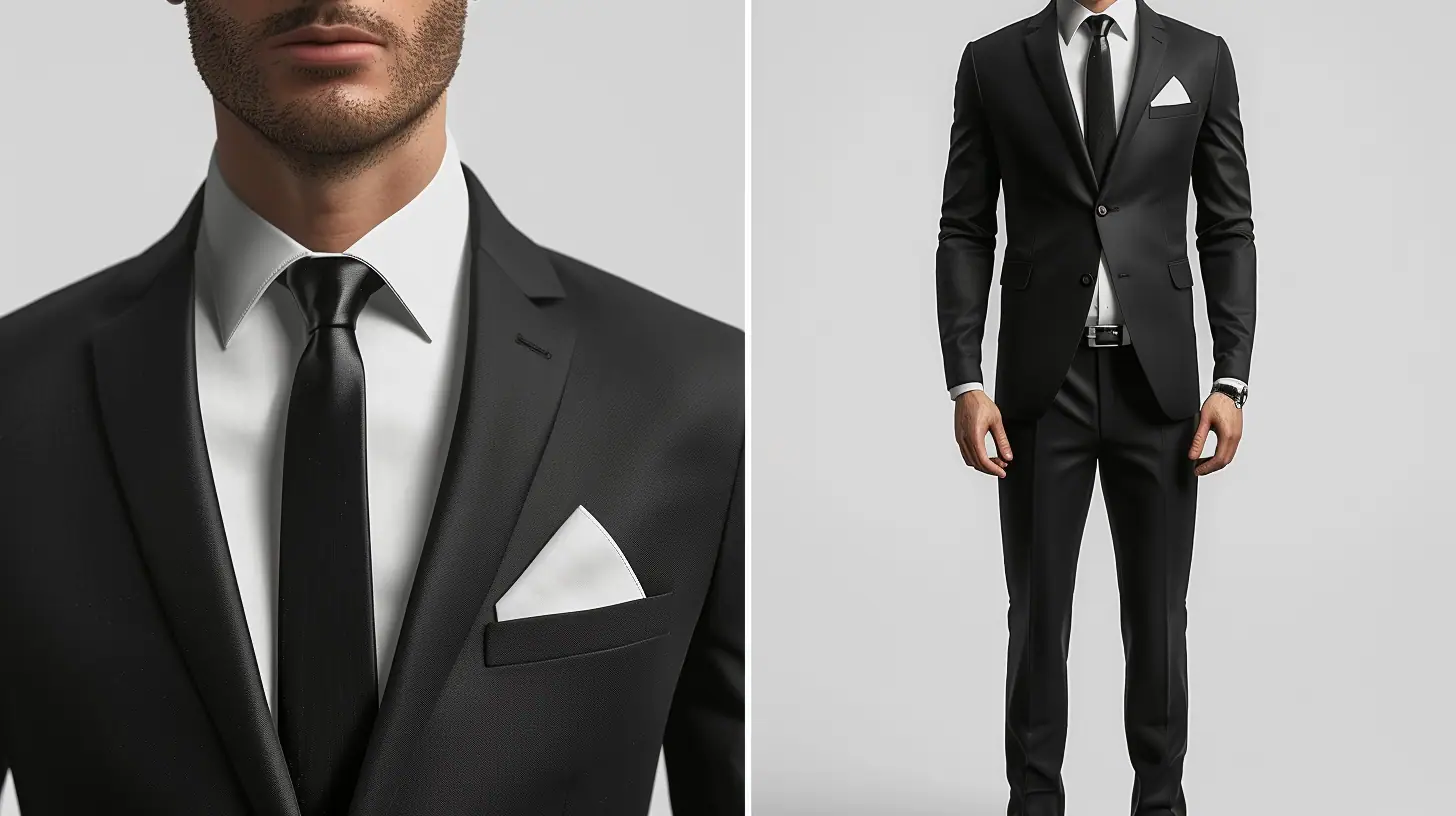
For a funeral, you’ll want to wear a dark-colored suit (black, charcoal, or navy) with a white dress shirt and conservative tie. Keep your accessories minimal and choose black Oxford dress shoes that are well-polished. Your suit should be clean, pressed, and properly fitted. Remember to wear dark dress socks and keep your grooming neat and professional. In warm weather, opt for lightweight wool fabrics, while cold weather calls for appropriate outerwear like a dark wool overcoat. Proper funeral attire shows respect for the deceased and their family, and there are important cultural and religious considerations to understand.

When attending a funeral, dark colors serve as the most appropriate and respectful choice for men’s suits. Black remains the traditional standard and safest option, as it symbolizes mourning and solemnity across many cultures. If you don’t own a black suit, dark charcoal gray or navy blue are also acceptable alternatives that convey proper respect for the occasion.
The color symbolism at funerals stems from long-standing traditions, where darker shades represent dignity and grief. You’ll want to avoid bright or flashy colors that might draw attention away from the ceremony and its purpose. Medium gray or brown suits typically aren’t appropriate unless specifically requested by the deceased’s family.
When selecting suit fabric options, choose materials that appear formal and subdued. Solid worsteds and wool blends work well, while you should avoid bold patterns, pinstripes, or textured fabrics that might appear too casual or business-oriented. Matte finishes are preferable to shiny or lustrous materials that could seem flashy or inappropriate.
Consider the season and venue when selecting your suit fabric. Lighter-weight wool or wool-blend suits work better for outdoor or warm-weather services, while heavier fabrics are suitable for indoor or cold-weather ceremonies.
Whatever your choice, make certain your suit is clean, pressed, and well-maintained. You don’t want wrinkles or visible wear to detract from the solemnity of the occasion or show disrespect to the deceased and their family.
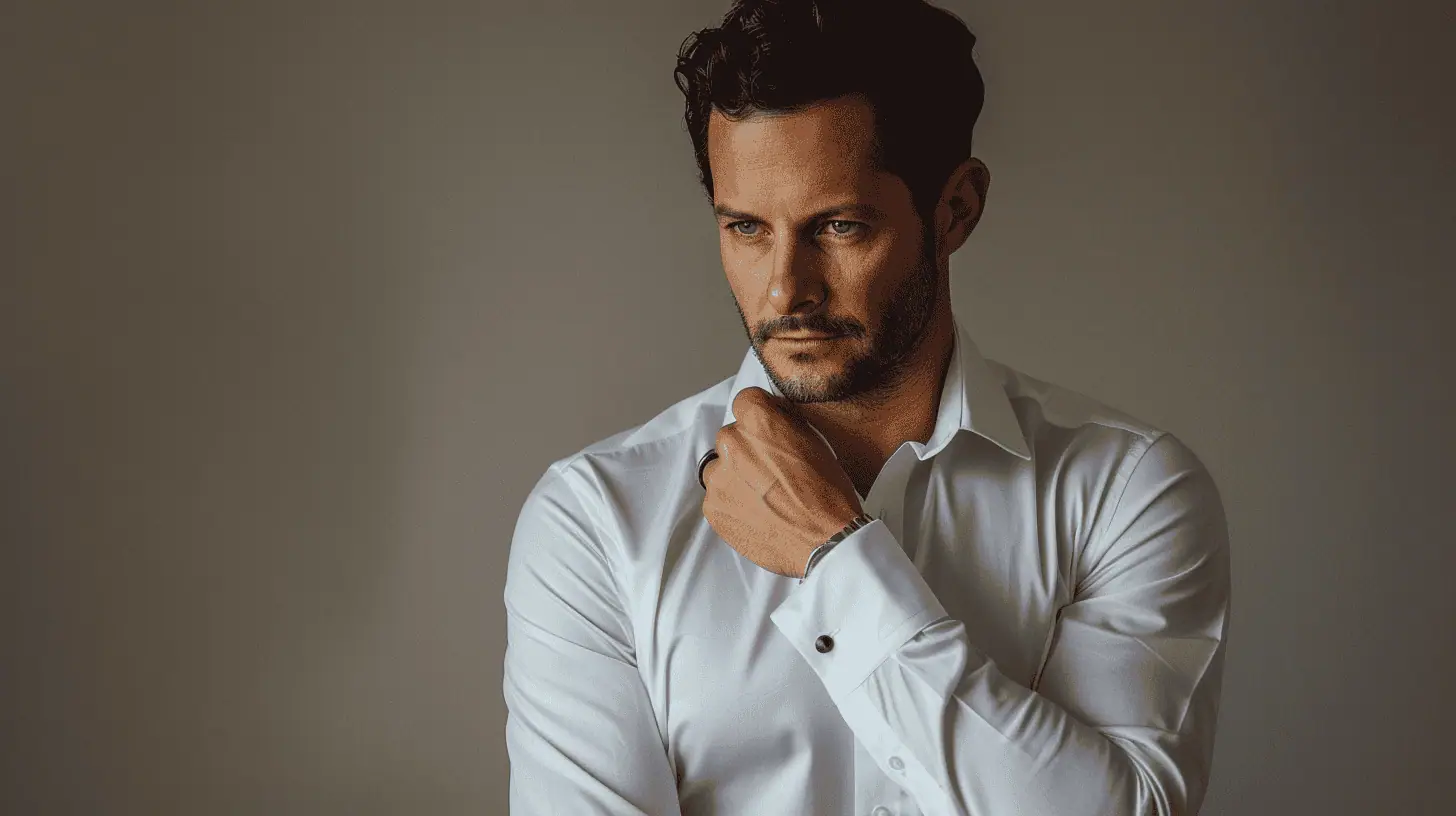
Generally, a crisp white dress shirt provides the most appropriate and versatile choice for funeral attire. When selecting your dress shirt, you’ll want to focus on both the fabric quality and fit to guarantee you’re properly dressed for the somber occasion. A well-pressed, clean shirt made from 100% cotton or a cotton-polyester blend will maintain its shape throughout the service.
| Feature | Recommendation |
|---|---|
| Fabric Options | Cotton Broadcloth, Oxford Cotton, Poplin, Cotton-Polyester Blend |
| Collar Styles | Point Collar, Spread Collar, Semi-Spread Collar, Wing Collar |
| Cuff Types | Single Button, French Cuffs, Convertible Cuffs, Barrel Cuffs |
| Fit Types | Classic Fit, Slim Fit, Modern Fit, Athletic Fit |
Your shirt’s collar style plays an essential role in your overall appearance. A classic point collar or semi-spread collar works best with traditional suit and tie combinations. Make certain your collar stays crisp by using collar stays, and avoid button-down collars as they’re typically considered too casual for funeral attire.
The shirt’s fit should be comfortable but not loose. You don’t want excess fabric bunching at your waist or arms, as this can appear untidy. The sleeve length should extend to your wrist bone when your arms are at your sides, with roughly ¼ to ½ inch of cuff showing beyond your suit jacket sleeve. If you’re wearing a tie, make sure your top button fastens comfortably without constricting your neck movement.
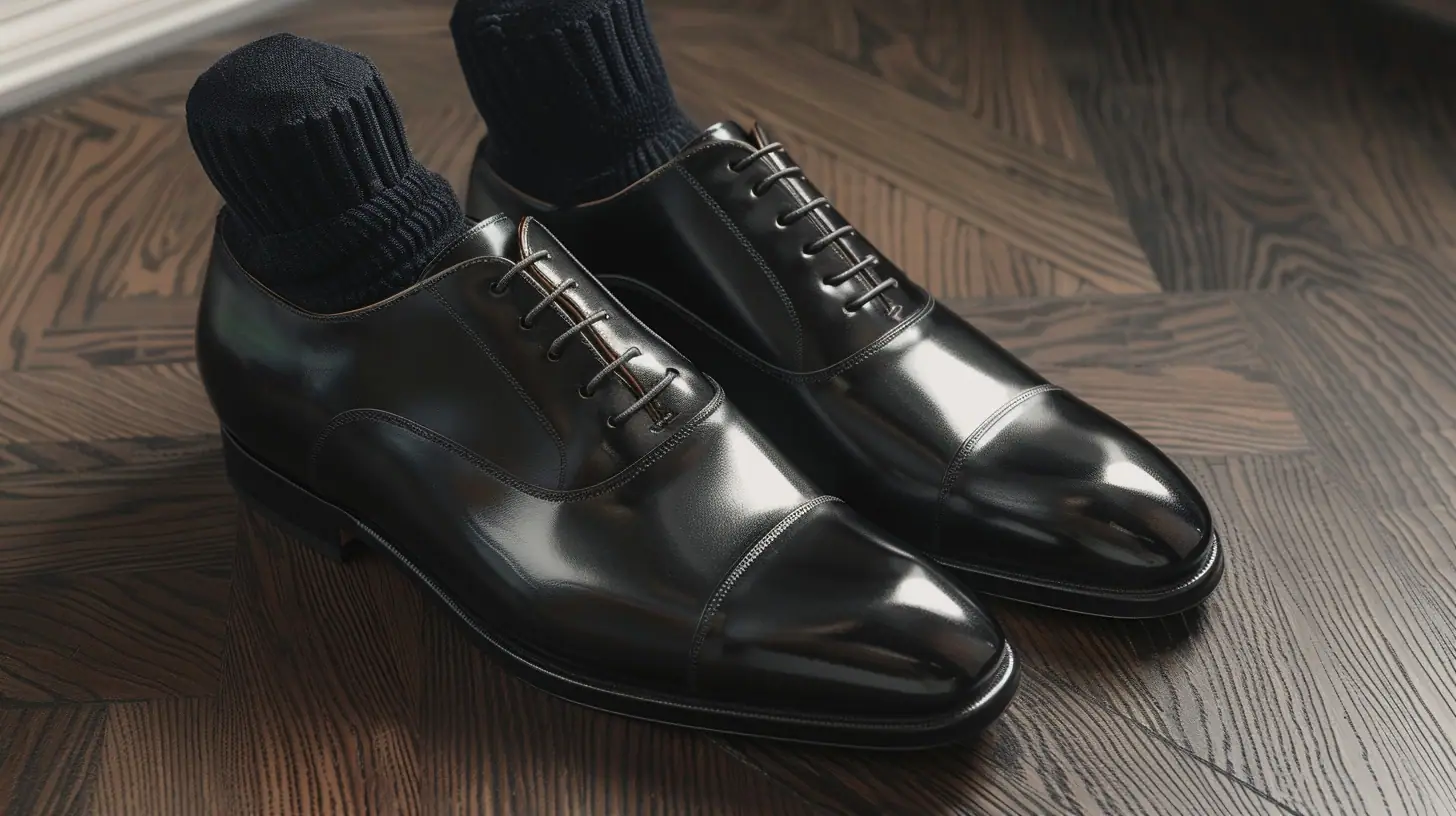
The right footwear completes your formal funeral attire and shows respect for the occasion. When selecting shoes for a funeral, you’ll want to focus on conservative, well-maintained dress shoes that complement your dark suit while guaranteeing comfort during what may be a long day of standing and walking.
Black leather Oxford shoes are your best choice, as they’re universally appropriate for funerals. These classic shoes feature closed lacing and a sleek profile that works well with formal attire. If you don’t own black Oxfords, dark brown leather dress shoes can be acceptable, though black is always preferred.
Regarding shoe material choices, opt for polished leather rather than suede or fabric, as these materials appear more formal and withstand unexpected weather conditions better.
For footwear comfort tips, make sure your dress shoes are already broken in before the funeral. New shoes can cause discomfort and blisters, which you’ll want to avoid during this somber occasion. Insert quality insoles if needed, and wear dress socks that provide adequate cushioning. Your shoes should be clean, polished, and free from scuffs or visible wear.
Avoid wearing any casual footwear, including loafers, boots, or athletic shoes, regardless of their color. Patent leather shoes, while formal, are typically reserved for evening events and aren’t necessary for a funeral.
Remember to check your shoes’ soles for excessive wear or damage, as you may need to stand on various surfaces, including grass at graveside services.
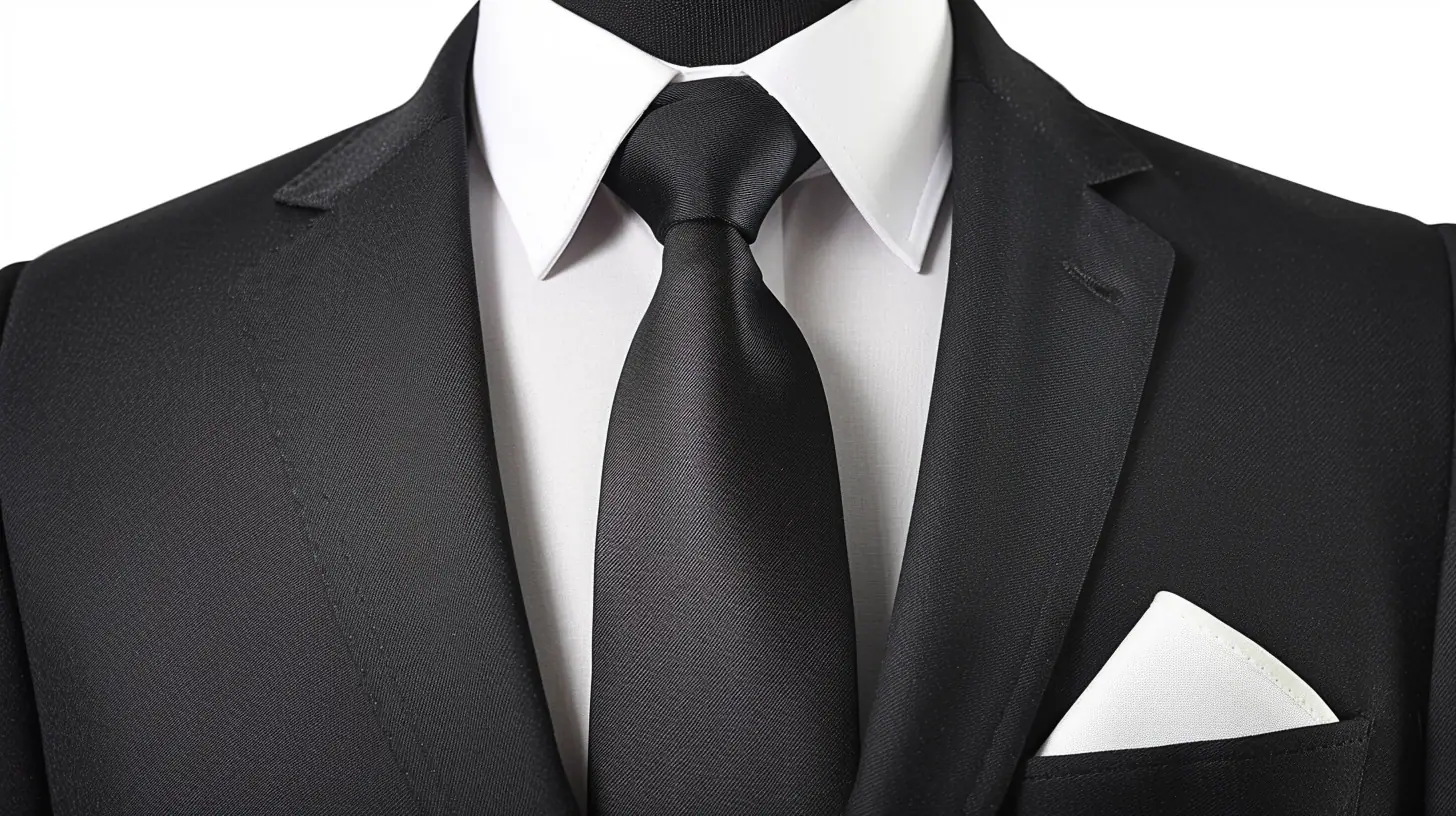
Selecting the right tie and pocket square stands out as a crucial detail for proper funeral attire. When attending a funeral, you’ll want to choose a solid black or dark navy tie in a conservative width. Avoid flashy patterns, bright colors, or novelty designs that might draw unnecessary attention. A silk or wool tie provides the appropriate level of formality for such a somber occasion.
For tie styles, stick to traditional options like the four-in-hand or half-Windsor knot. These classic knots convey respect while maintaining a dignified appearance. Your tie’s width should match your lapels to guarantee a balanced look. If you’re wearing a skinny-lapel suit, opt for a narrower tie; for standard lapels, choose a traditional width.
When it comes to pocket square folds, keep it simple and refined. The presidential fold (straight horizontal fold) or the classic single-point fold works best for funerals. Choose a white cotton or linen pocket square – silk can appear too shiny and formal. Make certain your pocket square doesn’t protrude too far from your jacket pocket; it should be visible but understated.
Don’t match your tie and pocket square exactly – this can appear too coordinated for a funeral setting. Instead, let your white pocket square complement your dark tie. If you’re wearing a white shirt, which is recommended, your tie should be darker than your shirt to maintain appropriate contrast.
Remember to check that both your tie and pocket square are clean, pressed, and free from any damage or wear.
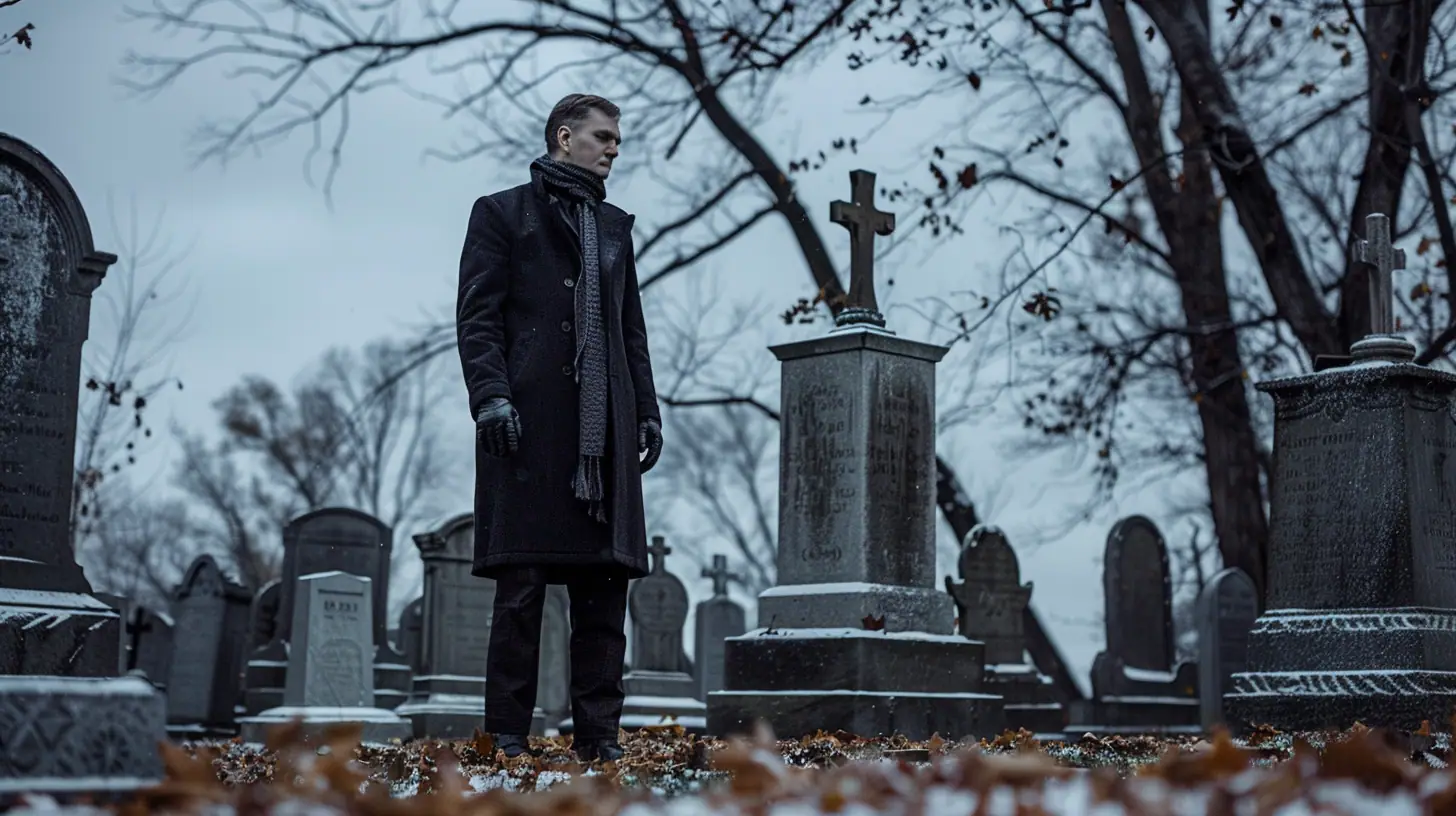
Attending graveside services requires appropriate outerwear to show respect while staying protected from the elements. When selecting your outerwear, you’ll need to take into account both the formality of the occasion and weather conditions. Understanding proper outerwear materials and layering techniques will help you maintain dignity during the service.
| Season | Recommended Outerwear | Not Recommended | Additional Notes |
|---|---|---|---|
| Winter | Black wool overcoat | Puffy ski jackets | Wear thermal base layer |
| Spring | Dark trench coat | Casual raincoats | Bring umbrella if needed |
| Summer | Light black blazer | No jacket | Early morning services may be cool |
| Fall | Classic peacoat | Leather jackets | Layer with suit jacket underneath |
You’ll want to focus on traditional outerwear materials like wool, cashmere, and cotton gabardine, which offer both sophistication and protection. These fabrics maintain their appearance even in challenging weather conditions while complementing your formal attire.
Master layering techniques by starting with your dress shirt and suit jacket as your base. Add your overcoat as the final layer, ensuring it’s long enough to cover your suit jacket but not so long that it appears cumbersome. You’ll want the coat to fall just above your knee for the most flattering and practical fit.
Remember to keep your outerwear clean, pressed, and in good repair. If there’s precipitation forecasted, opt for water-resistant materials but avoid anything too technical or sporty looking. Your goal is to maintain a respectful appearance while staying comfortable during the outdoor service.
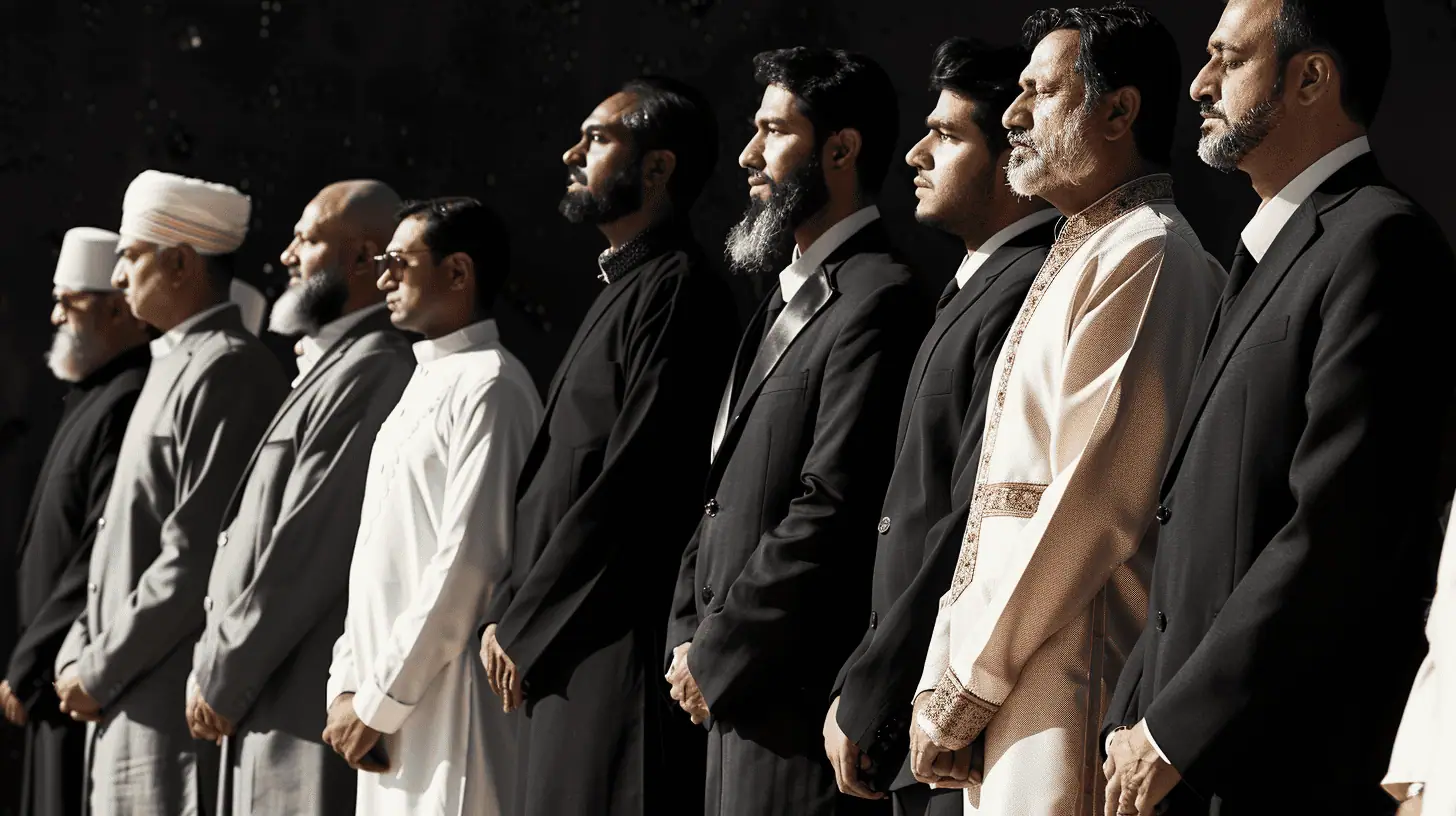
From within different regions and cultures across the globe, funeral attire expectations can vary considerably. While Western customs typically call for dark suits and ties, you’ll need to research specific cultural attire requirements when attending funerals in different communities or countries.
In many Asian cultures, the color white traditionally represents mourning, rather than black. If you’re attending a Buddhist funeral, you should wear white or black clothing without any bright accessories. For Hindu funerals, white is the standard color, and you’ll want to dress simply and modestly.
At traditional Jewish funerals, you’ll need to wear dark colors and bring a head covering called a kippah.
Regional customs within the United States can also influence appropriate funeral attire. In the South, you might encounter more formal expectations, while West Coast funerals may accept business casual clothing. In rural areas, clean and pressed western wear, including dark boots and a hat, might be perfectly acceptable.
When attending a funeral in an unfamiliar culture, it’s best to ask someone familiar with the customs for guidance. Some key questions to reflect upon: Are there specific colors to avoid? Should you wear any traditional garments? Are there rules about head coverings or footwear?
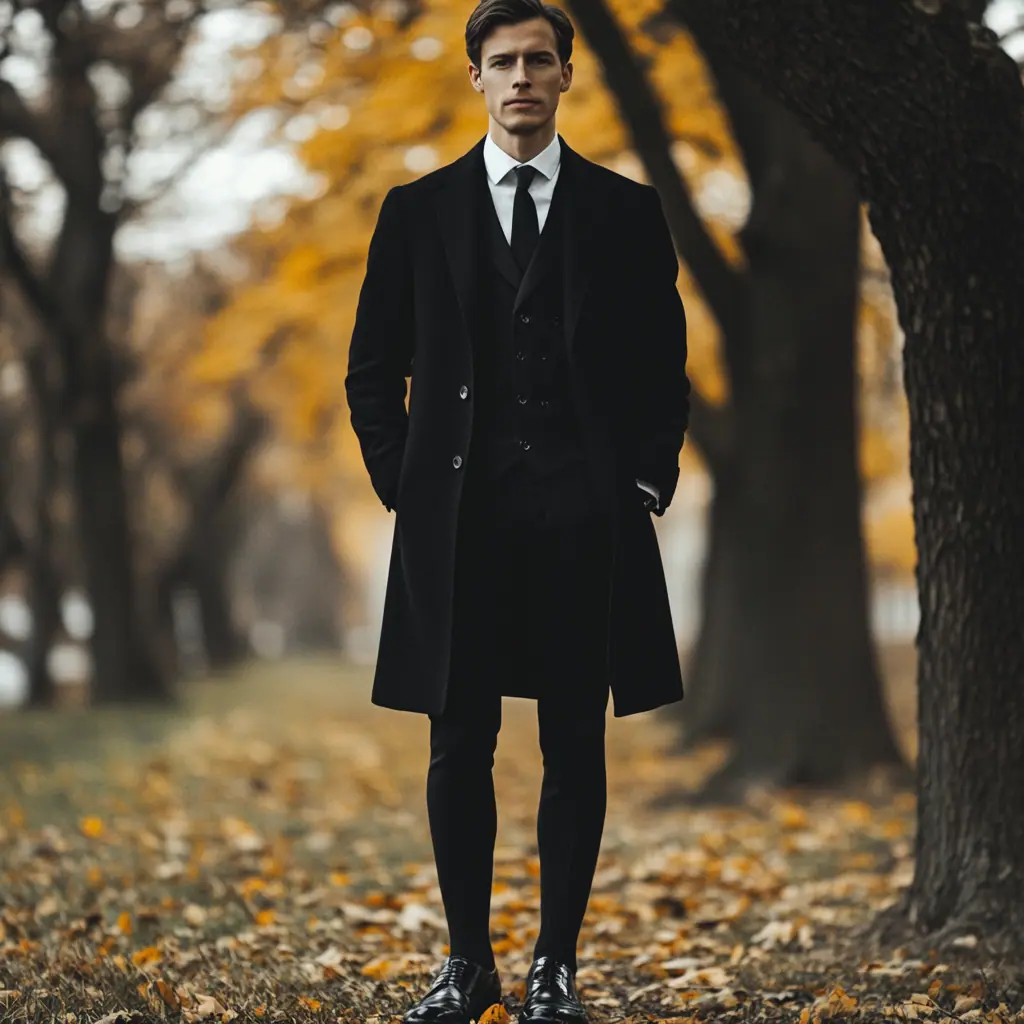
Throughout the changing seasons, appropriate funeral attire requires thoughtful adjustments while maintaining solemnity. You’ll need to adapt your clothing choices while adhering to funeral etiquette standards, ensuring both comfort and respect during the service.
In summer months, opt for lightweight dark suits in summer fabrics like tropical wool or wool-blend materials that breathe well. Choose a white or light gray dress shirt that’s both appropriate and cooling. While black remains the traditional choice, a dark navy suit is also acceptable and may be more comfortable in hot weather.
Remember to wear dress socks that cover your ankles, even in warm weather.
For winter services, focus on winter layering without appearing bulky. Start with a black or charcoal wool suit as your base. Add a dark overcoat for outdoor portions of the service, and consider a black scarf that you can remove once inside.
Your dress shirt should still be white or light gray, but you might choose a slightly heavier cotton fabric for warmth.
During spring and fall, mid-weight suits offer versatility. You can add or remove layers as needed, such as a suit vest or light jacket. These shifting seasons often bring unpredictable weather, so keep a dark umbrella handy and consider water-resistant dress shoes.
Regardless of season, maintain these constants: polished dark dress shoes, a conservative tie, and minimal accessories. Your goal is to show respect while staying comfortable enough to focus on supporting the bereaved family.
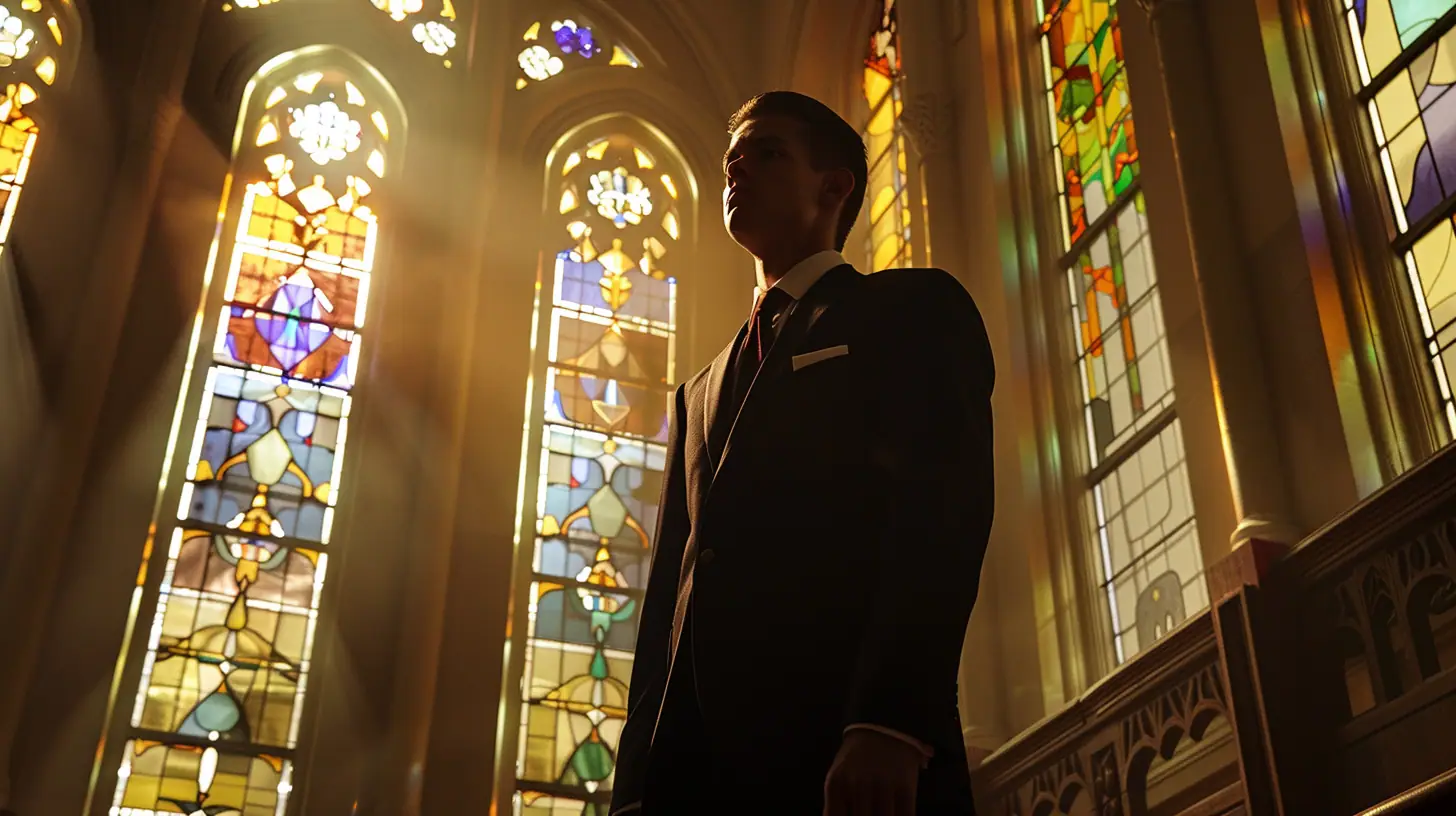
Religious traditions shape funeral dress codes considerably, requiring specific attire based on faith customs. When attending a religious funeral service, you’ll need to understand and respect the specific dress code associated with that faith. These requirements often carry deep religious symbolism and cultural significance that honor both the deceased and their beliefs.
Before attending any religious funeral, contact the family or funeral home to confirm specific dress requirements. Some services may have additional customs, such as covering your shoulders or wearing specific colors that hold particular meaning.
When in doubt, it’s better to dress more conservatively than risk appearing disrespectful to the deceased’s religious traditions.

When attending a funeral, proper accessorizing requires careful consideration and restraint. You’ll want to maintain a minimalist accessories approach that shows respect while avoiding any attention-grabbing elements. Focus on understated jewelry and classic pieces that complement rather than dominate your attire.
Select accessories that serve a purpose while maintaining sophistication. A simple watch with a leather band, a wedding ring, and perhaps subtle cufflinks are sufficient. You’ll want to avoid flashy metals, oversized pieces, or anything that creates noise when you move.
| Accessory Type | Appropriate | Not Appropriate |
|---|---|---|
| Watches | Dark leather band, simple face | Smartwatches, bright metals |
| Rings | Wedding band, family signet | Multiple rings, gemstones |
| Tie Accessories | Basic tie clip, simple pin | Novelty pieces, large clips |
| Other Items | Plain cufflinks, basic belt | Chains, bracelets, pins |
Your accessories should blend seamlessly with your attire while being functional. A black leather belt with a modest buckle works well, and you might consider a simple tie bar to keep your tie in place. If you wear glasses, opt for conservative frames rather than bold designs.
Remember that a funeral isn’t an occasion to showcase your style or latest acquisitions. Each piece you choose should reflect the solemnity of the event. When in doubt about an accessory, it’s better to leave it at home. The focus should be on honoring the deceased and supporting the grieving family, not on your personal adornments.

Modern funeral services have evolved beyond traditional religious ceremonies, leading to varied dress code expectations.
Today’s celebrations of life often reflect the deceased’s personality and wishes, which can mean more relaxed or personalized dress codes. You’ll find that some families specifically request casual alternatives to formal black attire, especially for outdoor memorial services or life celebrations.
When faced with contemporary funeral dress codes, consider these key guidelines:
Even with more relaxed modern standards, you should still err on the side of respectful presentation.
If no specific dress code is mentioned, opt for business casual at minimum – think dark slacks with a collared shirt rather than jeans or t-shirts. You can incorporate casual alternatives thoughtfully by choosing well-fitted, clean pieces in subdued colors.
Remember that while contemporary services may be less formal, they’re still solemn occasions deserving of careful consideration in your clothing choices.
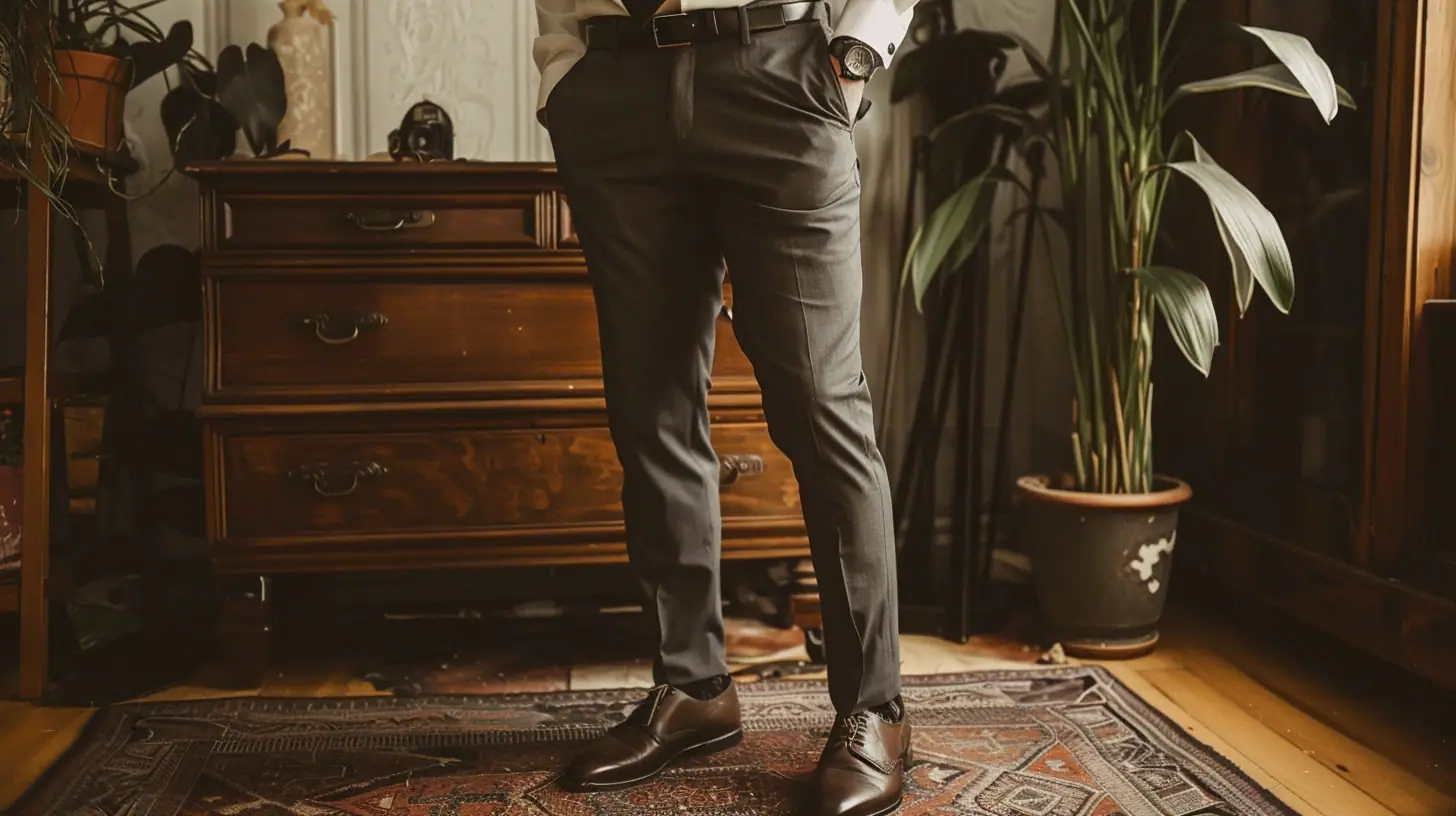
Not everyone needs to invest in a formal suit for attending a funeral service. You can create a respectful and appropriate ensemble using professional separates that maintain the solemnity of the occasion while working within your existing wardrobe.
A casual blazer paired with dress pants offers a dignified alternative to a matching suit. Choose a dark blazer in navy, charcoal, or black, guaranteeing it’s clean and well-pressed. Avoid blazers with bold patterns or bright-colored elbow patches. Your blazer should fit properly across the shoulders and chest, with sleeves ending at your wrist bone.
Dressy chinos or wool dress pants in dark colors work well as bottom options. They should be hemmed to the proper length and free of wrinkles. Stick to classic cuts rather than slim or relaxed fits, and guarantee the pants coordinate harmoniously with your blazer choice.
Complete your outfit with a white or light-colored dress shirt, preferably with a traditional collar. A conservative tie in a solid dark color or subtle pattern helps maintain formality. For footwear, opt for polished black or dark brown leather dress shoes with matching dress socks.
Remember to keep accessories minimal and understated. A simple leather belt that matches your shoes, a classic watch, and your wedding ring (if applicable) are sufficient.
When selecting these alternatives, focus on creating a cohesive look that shows respect while remaining comfortable and appropriate for the somber occasion.
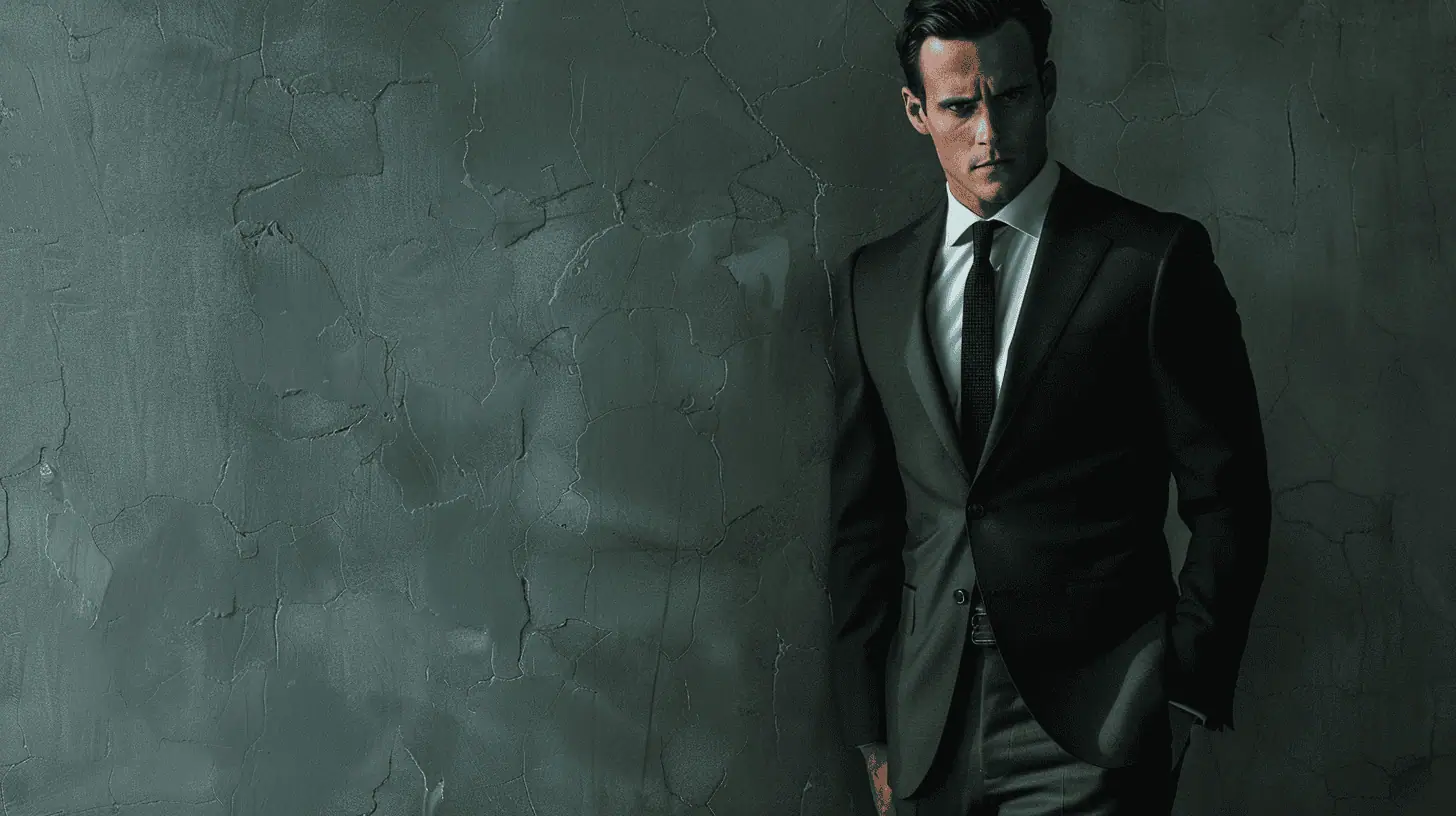
Beyond wearing appropriate attire, proper grooming plays an essential role in showing respect at a funeral service. Your overall presentation should reflect the solemnity of the occasion while demonstrating care for the grieving family. Following basic grooming essentials will help you maintain a dignified appearance throughout the service.
When preparing for a funeral, make sure you’ve addressed these key presentation tips:
You’ll want to arrive at the funeral looking well-groomed but not overdone. Remember that the focus should be on honoring the deceased and supporting their loved ones, not drawing attention to yourself.
Keep your appearance neat, clean, and understated. Pack a few essentials in your car or pocket, such as a lint roller, tissues, and breath mints, to maintain your presentation throughout the service.

At funerals, choosing inappropriate attire can distract from the solemnity of the occasion and may offend grieving family members. To guarantee you’re showing proper respect, there are several items and styles you’ll want to avoid completely.
Stay away from bright colors and flashy patterns, including neon shades, pastels, and loud prints. These draw unnecessary attention and can appear celebratory rather than respectful.
Don’t wear casual fabrics like denim, corduroy, or jersey knit materials. These fabrics are too informal for a funeral setting and may suggest you haven’t made an effort to dress appropriately.
Avoid wearing athletic shoes, sandals, or any footwear that’s overly casual or sporty. Skip accessories that might be distracting, such as novelty ties, large jewelry, or attention-grabbing watches.
Don’t wear shorts, even in warm weather, and steer clear of polo shirts, t-shirts, or any clothing with visible logos or graphics.
Keep in mind that underdressing is just as inappropriate as overdressing. Don’t show up in wrinkled, stained, or damaged clothing.
Avoid wearing items that expose too much skin, such as short-sleeved shirts or pants that sit above the ankle. If you’re attending a religious service, remember that some places of worship have specific dress codes that prohibit certain items like hats or open-toed shoes.
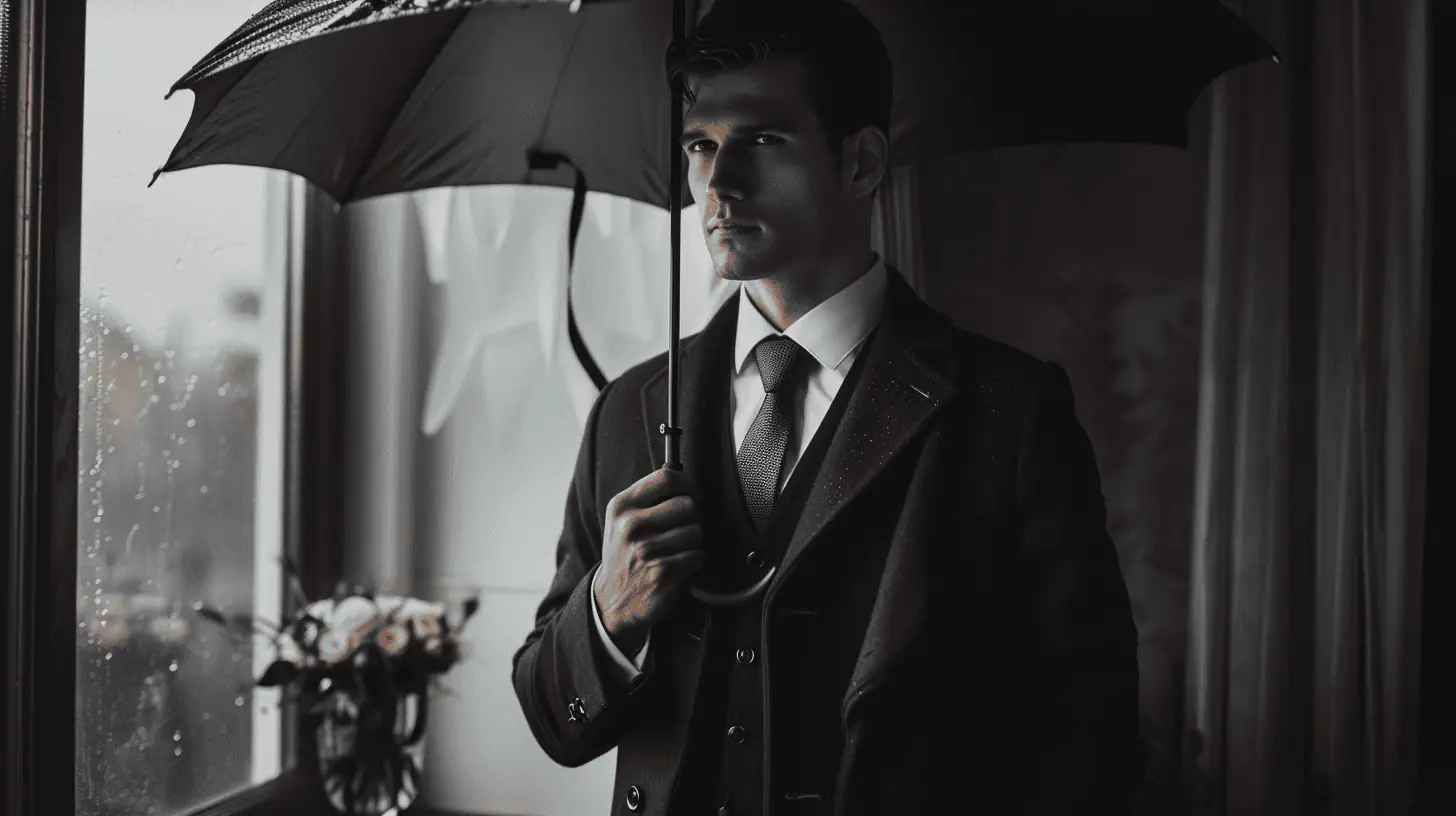
While maintaining proper funeral attire standards, you’ll need to adapt your clothing choices for different weather conditions. The key is to remain respectful while ensuring your personal comfort, allowing you to focus on supporting the grieving family.
For hot weather, opt for lightweight wool or tropical-weight fabrics that offer breathability without compromising the formal appearance. Consider sun protection by bringing a black umbrella, which serves dual purposes of shade and rain coverage. Choose a light dress shirt that wicks moisture, and don’t be afraid to remove your suit jacket once you’re seated at an outdoor service.
For cold conditions, layering options become essential. A dark wool overcoat over your suit provides warmth while maintaining the appropriate appearance. You can wear thermal undergarments beneath your dress shirt and opt for wool socks to keep warm without visible modification to your attire.
Remember to keep modifications subtle and maintain the solemnity of the occasion. Your adjustments should never draw attention or distract from the purpose of the gathering.
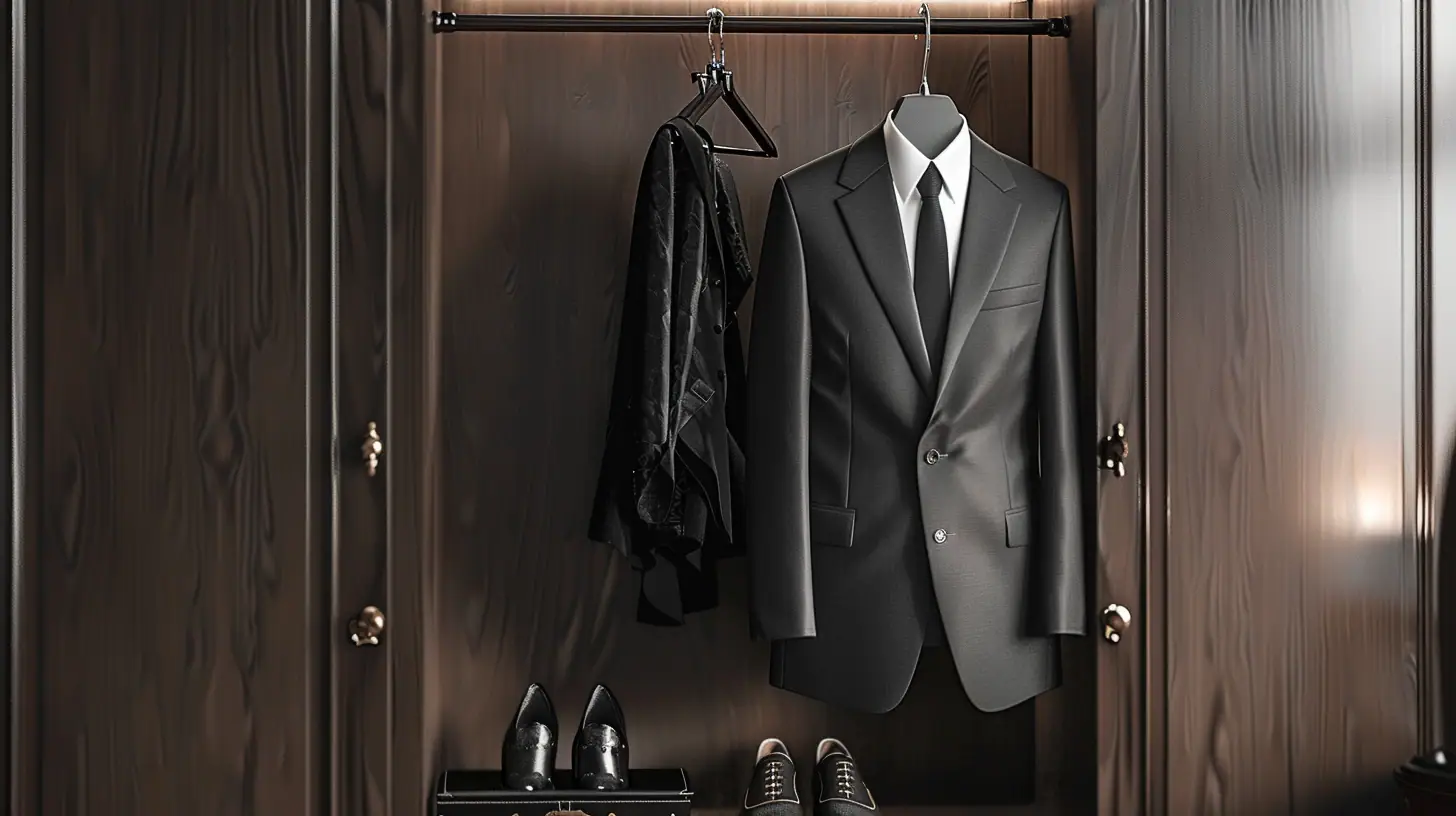
Emergencies can leave you scrambling to put together appropriate funeral attire with limited time and resources. When faced with this situation, you’ll need to act quickly and consider several practical solutions to guarantee you’re dressed respectfully for the service.
If you own a suit that’s slightly ill-fitting, seek emergency alterations at a local tailor who offers same-day service. Many tailors understand the urgency of funeral attendance and will prioritize basic adjustments like hemming pants or taking in a jacket.
If you can’t find a tailor, temporary solutions like fashion tape or safety pins can help manage minor fit issues.
Rental options provide a reliable solution when you don’t own appropriate attire. Most formal wear shops can provide a basic black suit within 24 hours. You’ll want to call ahead to check availability and explain your situation.
Remember to request conservative options suitable for a funeral rather than festive event wear.
Department stores often offer off-the-rack suits that can work in a pinch. Head straight to their formal wear section and look for dark colors like black, charcoal, or navy.
If you can’t find a complete suit, pair dark dress pants with a black blazer. Don’t forget essential accessories like a white dress shirt, dark tie, and black dress shoes.
For shoes, if you don’t own appropriate footwear, clean and polish any dark leather shoes you have.
In extreme cases, some shoe stores offer same-day purchases and can quickly fit you with basic black dress shoes.
Yes, you should always remove your hat during indoor services as it’s a fundamental part of proper hat etiquette.
This respectful gesture applies to both religious and non-religious indoor ceremonies. You’ll want to remove your hat before entering the building and keep it off throughout the service.
If you’re unsure about specific customs, it’s better to err on the side of respect and remove your hat indoors.
Did you know that 65% of funeral attendees check the time during services?
You can wear a wristwatch to a funeral, but stick to understated wristwatch styles that won’t draw attention.
Funeral etiquette suggests choosing simple, classic timepieces in neutral colors like black, silver, or gold.
Avoid flashy digital watches or smartwatches that might light up or make sounds.
A subtle analog watch is perfectly appropriate and practical for timing purposes.
Family heirlooms are generally appropriate to wear at funerals, especially if they hold sentimental value connected to loved ones.
When following jewelry etiquette, you’ll want to keep pieces subtle and meaningful rather than flashy.
If you’re wearing a family ring, brooch, or pendant, it can be a tasteful way to honor your heritage and family connections during the service.
Just guarantee the pieces aren’t too ostentatious or distracting.
Like a gentle stream flowing with purpose, your arrival at a funeral should be deliberate and respectful.
You’ll want to arrive 15-20 minutes before the scheduled start time, allowing yourself to quietly find a seat and settle in. This timing consideration shows respect for the grieving family and other mourners.
Regarding arrival etiquette, it’s better to be early than late, as rushing in during the service can disrupt the solemn atmosphere.
You don’t need to match your belt color with other family members, as there’s no traditional significance to belt coordination at funerals.
However, it’s wise to check if there’s a specific family dress code they’d like you to follow.
When in doubt, stick to a classic black or dark brown leather belt that matches your shoes.
This keeps the focus where it belongs – on honoring and remembering the deceased.
Dressing appropriately for a funeral isn’t just about following rules – it’s your final sartorial salute to the departed. Like a solemn symphony in fabric, your carefully chosen attire shows respect while providing a shoulder for others to lean on. Remember, you’re not just wearing clothes; you’re wearing dignity and compassion. When in doubt, let classic simplicity be your guiding star through this difficult occasion.



